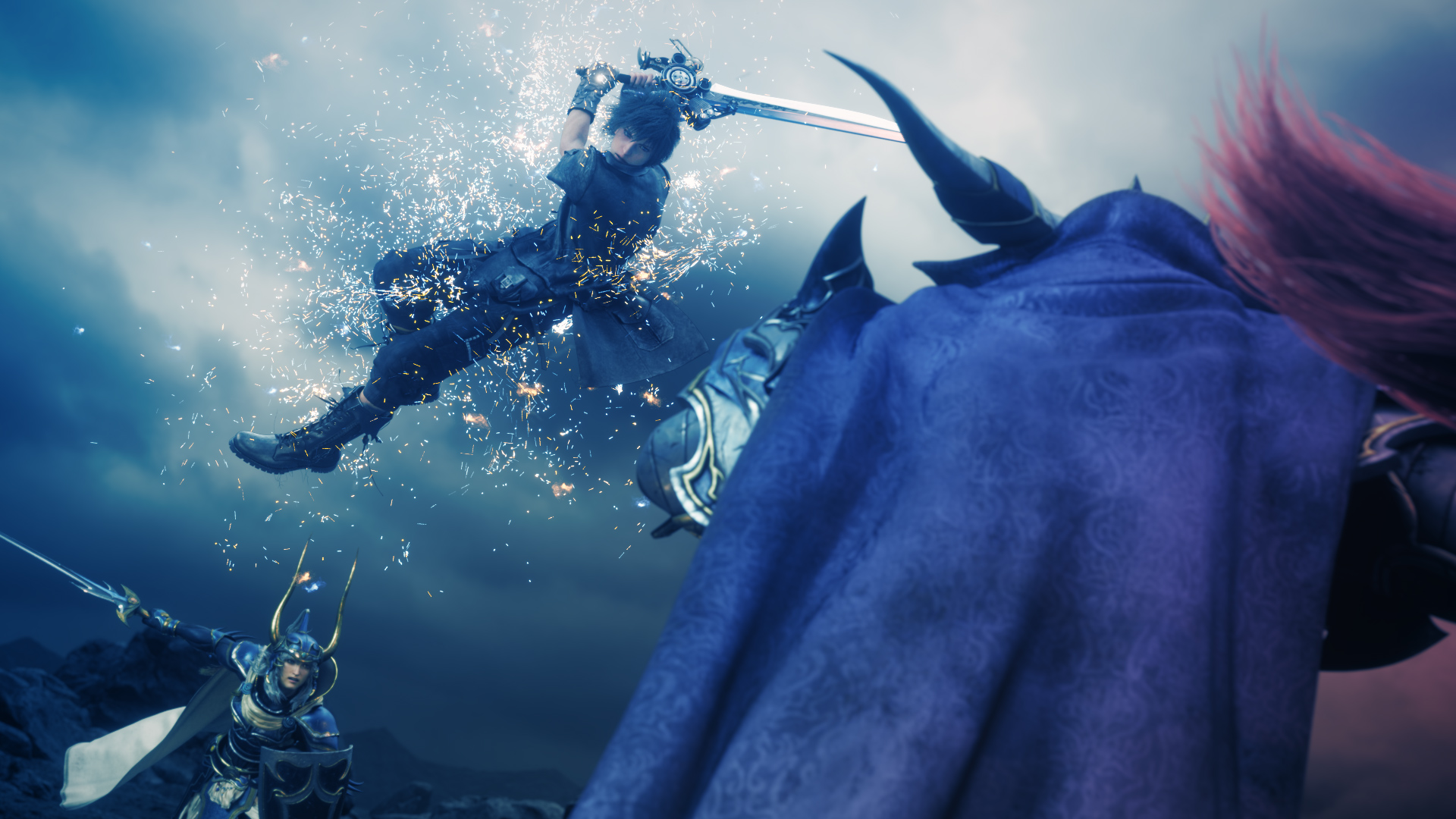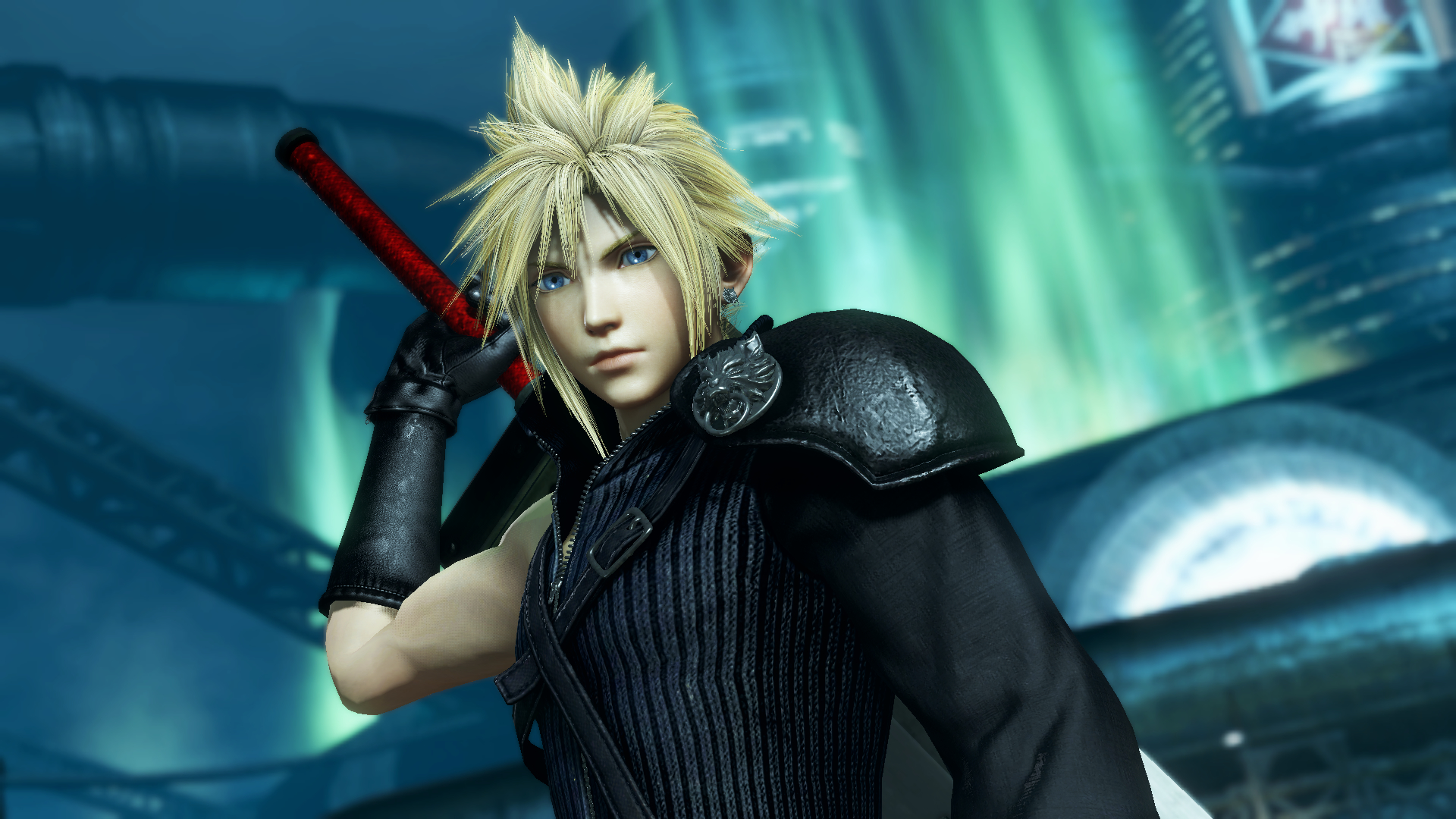Recently, I had the chance to spend a morning playing the up-coming Dissidia Final Fantasy NT, and it became more and more apparent the longer I spent with this group brawler that teamwork is by far the most important element when it comes to playing the game well and being victorious.
After two PSP entries of Dissidia found characters from across the Final Fantasy series facing each other one on one, this up-coming PS4 version takes the battle to a larger scale and has you fighting in teams of three in an effort to defeat the other group and come out on top. With most of the cast from the original Dissidia titles already confirmed to be returning, players familiar with the series won’t be in completely uncharted waters – but there are still surprises. The villains are still greatly enjoyable to play as, but certain characters such as Kuja have been tweaked after their original appearances on the PSP. IX’s antagonist now feels slightly less mobile whilst attacking and took some getting used to. The Emperor, on the other hand, still uses traps but feels considerably more important in a team-based situation where he can successfully sneak around in the background and catch opponents off guard.

Newcomers Ace, from Type-0, and Ramza, from Tactics, make excellent additions to the core cast of established characters. Ace’s cards give him a unique fighting style when compared to the rest of the fighters, allowing him to chip away at his foes from a distance whilst feeling faster than spell-casters like Terra. Ramza is equally enjoyable to play as, if only to see him throwing stones at his rivals, shouting to strengthen himself or his allies, and casting Holy to defeat foes from afar. All of the characters in Dissidia NT are simply fun to control – a particular mention goes to Kain here. His High Jump skill not only looks awesome, it’s also useful both in offense and as a means to dodge attacks at the last second which is always so, so satisfying. Every character in Dissidia feels unique enough that every time I switched my fighter I felt like I had to adapt my play style, which kept things from feeling stale or repetitive.
Most characters in Dissidia NT fit into one of three categories and adhere to a rock-paper-scissors style of play – heavy-hitting Vanguards are strong against speedy Assassins, Assassins are strong against long-range Marksmen, and Marksmen are strong against Vanguards. I didn’t find myself paying too much attention to these categories early on, but the more you play the more relevant this becomes. Rather than picking your favorite character over and over again, you have to think about their strengths and weaknesses and adapt your choice of character based on how effective they will be with the rest of your team. Your strategy not only has to consider your own team, but your opponents, too. Choosing who you target can be the difference between winning and losing – as Zidane, I was in for a considerably more difficult fight if I chose to focus on another fast-paced Assassin like Squall, whereas I could make short work of a Marksman like Terra who kept trying to cast spells from a distance. Besides, with so many varied characters from the series to choose from, it almost feels a waste to ever limit yourself to constantly picking the same fighter.

Unlike traditional fighters, certain characters alone in Dissidia NT are clearly unbalanced against others and easily prevail. However, when the same characters are put into a team-based situation, balance is restored and those who previously would have been easy pickings can suddenly become deadly. Take the magic-wielding, trap-laying Y’shtola, for example – by herself she will be made short work of by any Assassin. However, by pairing her with some brute-strength Vanguard-classed characters that can divert attention and defend her aggressively, Y’shtola is free to lay traps and cast spells that can quickly annihilate the other team.
The most vital element of Dissidia NT is unquestionably teamwork. Certain characters compliment each other well – a team of three mages will be defeated easily, but if you put a mage with two faster attackers who can protect the spell-caster you stand a significantly greater chance of victory. The importance of teamwork isn’t just restricted to character selection – even summoning fearsome beasts to help you out in battle requires some careful thinking about your allies in order for it to be effective. Summoning takes time and leaves your character wide open to attack, with the time needed to complete the summoning getting shorter if your team all does it at the same time. You either need to work together and co-ordinate your summoning efforts to minimize the time you are all vulnerable, or make sure your allies know to protect you whilst you’re doing the summoning alone. Many matches were lost because as soon as we gained the ability to summon, we dropped all of our defenses in excitement and let the other team wipe us out in seconds.

I’d go as far to say working well together is even more important than your own proficiency with each character – I quickly went from winning consistently to often being defeated because the other team figured out the importance of helping each other out, be that by the Emperor setting traps in the background, or a sneaky Cloud attacking me from behind whilst I was busy focusing on a different character. Coordinating your efforts can quickly turn the tide of a battle. As someone who initially disliked the concept of Dissidia NT becoming a 3v3 brawler, it’s really evident the longer you play that this team based system is a perfect fit for a series like Final Fantasy with its diverse cast of characters, and it is an awful lot of fun when you fully grasp all of the different concepts involved.
Even what stage you play on becomes relevant to the strategy you employ – they mostly fit into one of two categories. Some, such as Cornelia, are open fields that very much encourage a free-for-all brawl. Others, like Midgar, are filled with platforms and obstacles that give players more opportunities to hide or sneak attack their foes. What they have in common is that all of these stages feel huge – they have to be in order to allow six characters to fight in them without the battle ever feeling too cluttered. If anything, those who insist on fighting 1v1 in custom lobbies may quickly find the stages feeling a bit too much like empty football stadiums.
The version I played still had the same cluttered HUD from the beta test earlier this year, although screenshots have already shown a more streamlined version will be present in the final release. That being said, when you understand everything you’re looking at and have really gotten to grips with all of NT’s mechanics, everything becomes considerably less daunting. There is undoubtedly a steep learning curve initially with a lot to get your head around, but once you’ve taken the time to learn a new style of fighting game it’s hard to believe it was ever as confusing as it seemed.
It’s a joy that no one or thing feels overpowered in NT, and it’s actually a case of everyone being as powerful as one another…
Many truly tense matches were had thanks to the way no single mechanic in NT is overpowered. Summons, despite helping you out immensely, are in no way an instant win in any match. Even when you gain the advantage by managing to call upon one of these enormous monsters, becoming complacent can lead to a fast defeat. It’s a joy that no one or thing feels overpowered in NT, and it’s actually a case of everyone being as powerful as one another, meaning no match was trivial yet it always felt exciting to watch characters performing flashy attacks. Every round I played was exhilarating, and at times they were almost over too soon – each match is only four minutes long or automatically ends when the first team loses three lives, though I imagine this might be adjustable in the final game. With the way it was, I sometimes felt like I was only just getting into the fight before a victor was announced.
Although I was initially skeptical, it has to be said that a three-on-three brawler feels perfect when you’re dealing with a cast of characters as varied and interesting as those found throughout the Final Fantasy series. Once the initial learning curve is out of the way, battles are delightfully chaotic, frantic and fun.
Dissidia Final Fantasy NT will be released worldwide on January 30th 2018 for the PS4.

Recent Comments